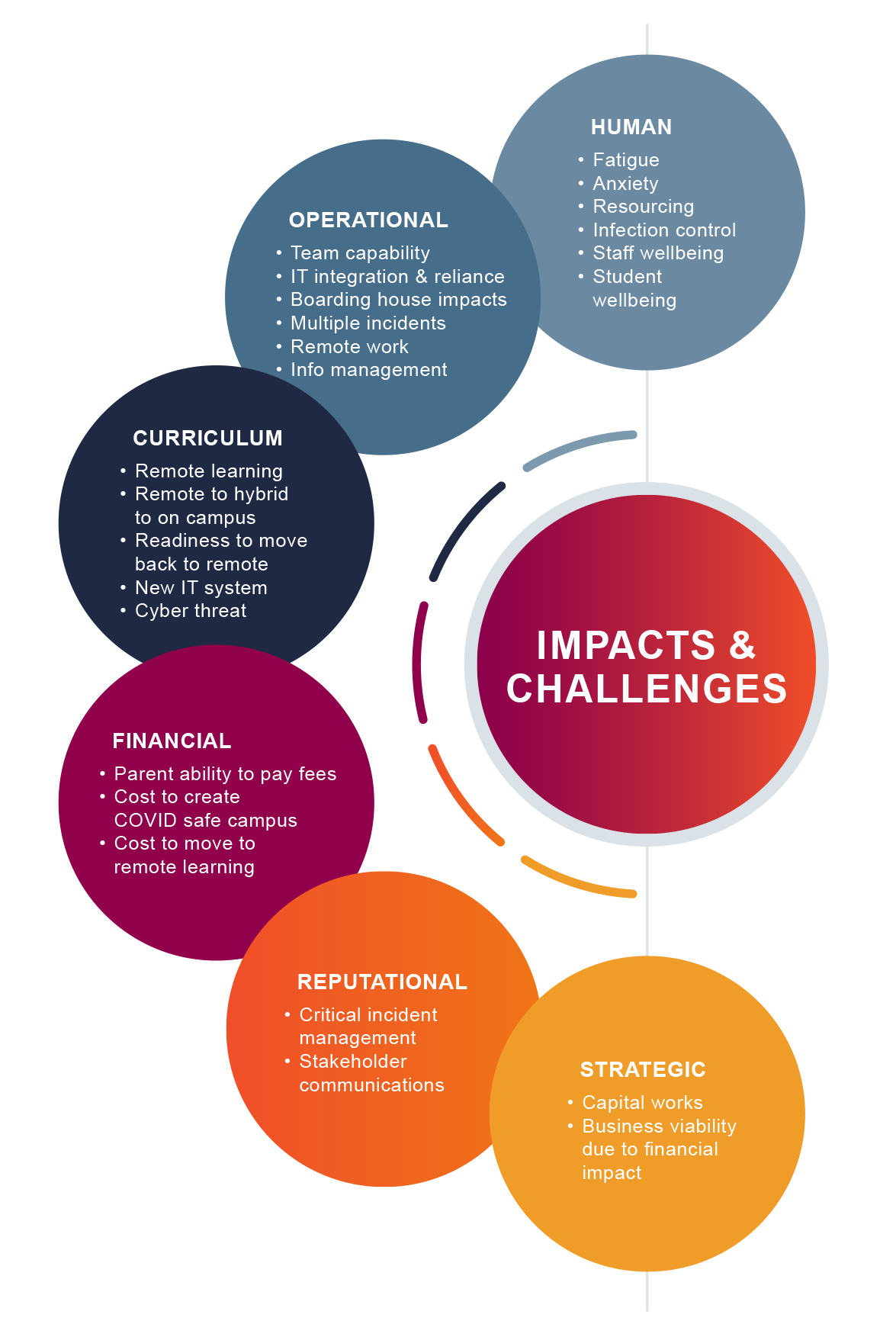COVID-19 is at the front of everyone’s minds and has been for the last 5 months (although the intensity and impact of it has made it feel like a lot longer!). No matter what industry you are in, or what your situation is, it is fair to say that most of us are looking forward to seeing the end of COVID -19 and getting back to business as usual. However, the reality is that we need to continue managing the impacts during its existence and beyond with business continuity and critical incident management processes.
Schools have been required to re-engineer the way they deliver their core business functions (including curriculum to ensure that essential educational services continue being delivered), we have seen schools respond differently depending on their different levels of preparedness. We have seen that with a Critical Incident Management Plan schools have taken a considered approach in developing their response and management programs, whilst those schools without have been reactive.
Regardless of the approach you are taking, this pandemic is forcing all industries to establish and/or update their Business Continuity and Critical Incident Management Plans based on what worked and what didn’t. In addition, the recovery and post-COVID-19 stage is presenting a new set of business continuity challenges that need addressing.
The below diagram illustrates some of the impacts and challenges experienced as a result of the COVID-19 pandemic:

So, what do you need to consider for effective business continuity and critical incident management for now and post-COVID (it is important to note that there will be changes post-COVID that will become the ‘new normal’ and will therefore need to be reflected in all plans and procedures).
- What has changed in the school’s risk profile? Consider the above impacts and challenges to prompt your thinking.
- What needs to be updated in the school’s Emergency Response Plan, Critical Incident Management Plan and/or Business Continuity Plan?
- Are changes required in your Emergency Control Organisation (warden team)?
- Are changes required in your Critical Incident Management team?
- Have IT changes been integrated with business as usual practices? For e.g. COVID-19 has shown that schools can operate remotely during a slow burn incident, creating opportunities to conduct school operations online during disruptions.
- Have updated business processes been reflected in your business continuity plans? This may include recovery timeframes and resources to recover those business processes.
- Did your leadership team follow a measured, controlled approach to assess the impacts of the incident? Do you have tools to assist with this process?
- Did your team(s) know what to do? Are there any gaps in capability that need to be addressed?
- Did staff and student welfare measures work?
Taking the time to reflect allows leadership teams to set future objectives within the school disruption program and identify areas of re-focus to align with the new normal.
Next Steps:
In addition to the current COVID-19 situation, it is important to also remain focused on the compliance and best practice requirements in business-as-usual times.
The following steps are suggested for you to start considering and implementing now to build capacity and capability for effective management of incidents post-COVID:
- Conduct a debrief to identify lessons learnt and any gaps.
- Conduct Impact and Issues Assessment to forecast the issues to address.
- Review and update/build your emergency, critical incident, and business disruption arrangements, including:
- Emergency response
- Critical incident management
- Business continuity
- Disaster recovery
- Cyber Response
- Prepare your 2021 resilience roadmap.
- Conduct a Post Incident Review when COVID is over.
If you would like further information on conducting post incident reviews or need support, please feel free to get in touch.

